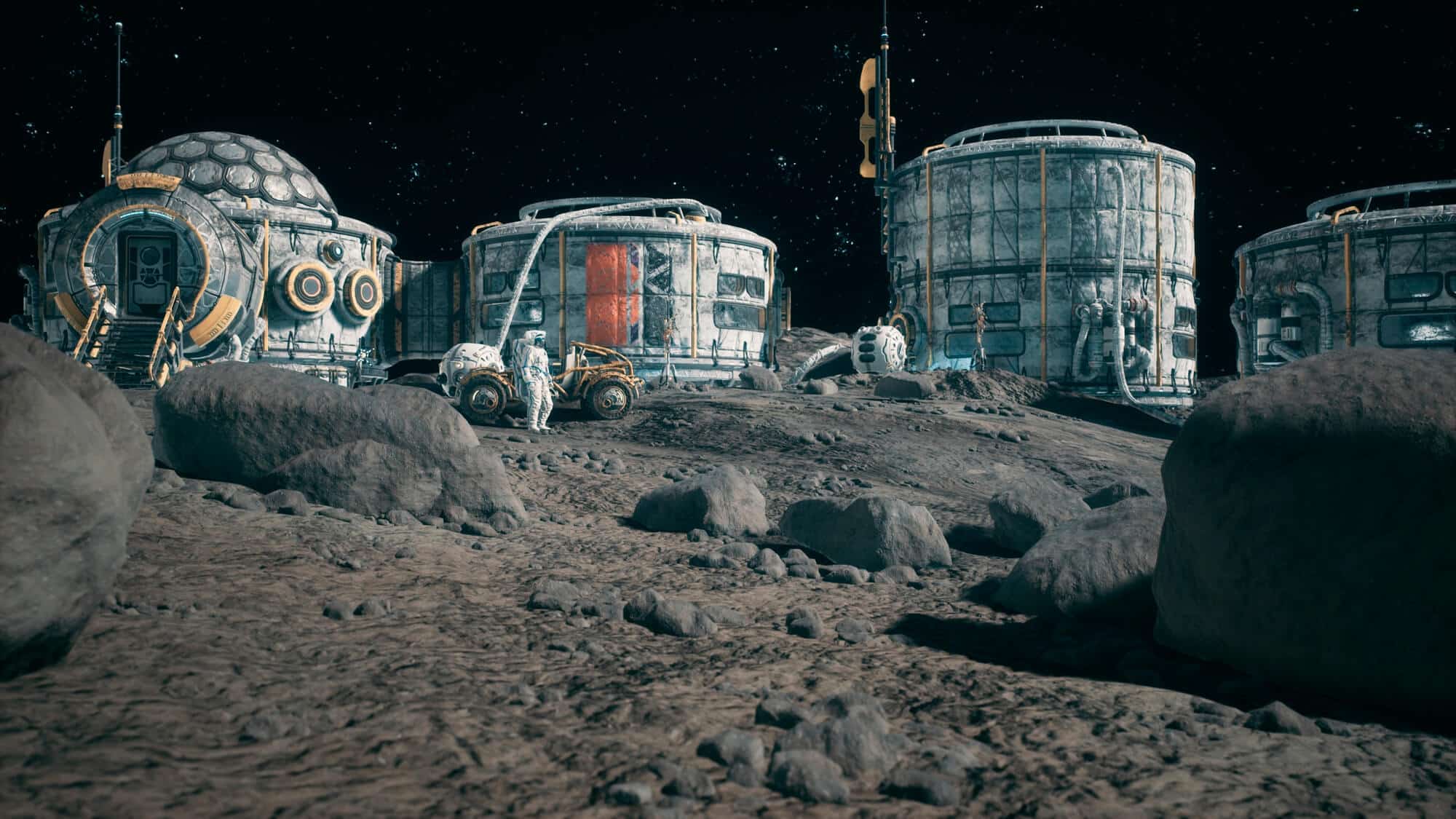The main challenge in farming on the moon is creating a habitable environment that can protect plants from the harsh conditions on the moon's surface. This can be achieved through the use of greenhouses or other controlled environments that will protect plants from the extreme temperatures and radiation but it is also required to implement this using local materials

Recent research suggests that it may be possible to build agricultural farms on the moon, paving the way for long-term human settlement on our closest celestial neighbor. While the idea of farming on the moon may seem far-fetched, new research has shown that it is possible, provided certain conditions are met.
The surface of the moon is not suitable for life as we know it, with no atmosphere, extreme temperature changes and high radiation levels. However, the moon has some advantages when it comes to farming. For example, the moon receives a steady supply of solar energy, which can be harnessed to power a lunar greenhouse.
In addition, the soil of the moon, or regolith, contains nutrients that can be used to grow plants. While the regolith itself is not soil in the traditional sense, it contains minerals and trace elements essential for plant growth, such as nitrogen, phosphorus and potassium.
The main challenge in farming on the moon is creating a habitable environment that can protect plants from the harsh conditions on the moon's surface. This can be achieved through the use of greenhouses or other controlled environments that will protect plants from the extreme temperatures and radiation.
One potential approach to lunar farming is hydroponics, a method of growing plants in nutrient-rich water rather than soil. Hydroponic systems are already used on Earth to grow crops in environments where traditional farming methods are not applicable, such as deserts or urban areas.
Hydroponic systems can be adapted for use on the moon, providing a controlled environment that will protect the plants from the harsh conditions on the lunar surface. These systems will also enable precise control over the nutrients and water the plants receive, optimizing growth and minimizing waste.
Another potential approach to lunar agriculture is the use of genetically modified plants adapted to the lunar environment. Researchers have already begun to explore the use of gene-editing technologies such as 'Crisper' to create plants that can thrive in challenging conditions, such as drought or extreme temperatures.
By applying these technologies to lunar agriculture, scientists could create plants specifically designed to grow in the unique environment of the moon, thereby increasing the potential for long-term human settlement.
While lunar farming is still a relatively new and untested concept, the potential benefits are significant. If successful, lunar agriculture could provide a sustainable food source for future lunar missions and could pave the way for long-term human settlement on the moon.
A viable colony on the moon must be nutritionally independent
"These studies are essential for long-term lunar exploration in the future," said the European Space Agency's materials and process engineer, Malgorzata Holinska, who has worked with various industries on promising new ideas in space exploration. "Achieving a sustainable presence on the moon will involve using local resources and gaining access to nutrients found in the lunar surface, with the potential to help cultivate plants. The current study constitutes a proof of principle using available simulants of lunar regolith, and opens the way for more detailed research in the future."
Solsys, which is developing a mining system for use on the moon, proposes to use the same nutrients that will be produced on site as mining byproducts, to create fertilizer for agriculture. Solsys has also developed XNUMXD printed hydroponic growing systems.
Lunar agriculture may have implications for sustainable agriculture on Earth. By developing new technologies and techniques for growing crops in extreme environments, scientists can help address food security challenges in areas vulnerable to climate change, drought or other environmental factors.
For the article on the Universe Today website
More of the topic in Hayadan:
- An innovative system estimates the habitability (ability to support life) of distant planets
- SpaceIL announces together with Lunaria One the selection of another experiment for the Genesis 2 spacecraft: growing plants on the moon
- There is enough oxygen on the moon's surface to support billions of people living there
- Interstellar Lab unveils "BioPod" - a living simulator on the Moon and Mars

6 תגובות
One big bullshit
Is there a limit to lies in the name of God???? Apparently there is no limit to lies!
Whoever wants to believe, let him believe...
You have to go all the way and get to the person who writes these nonsense articles and really see who these stalwarts are who are stalking the whole world....
hahahah come on
Maybe you should start in the Sahara or Antarctica first.
Gotta land on the moon first I think
It really "makes sense" to develop agriculture on the moon for hundreds of billions, and then see if it is "applicable" in "vulnerable areas" on Earth.
It should not be the opposite?